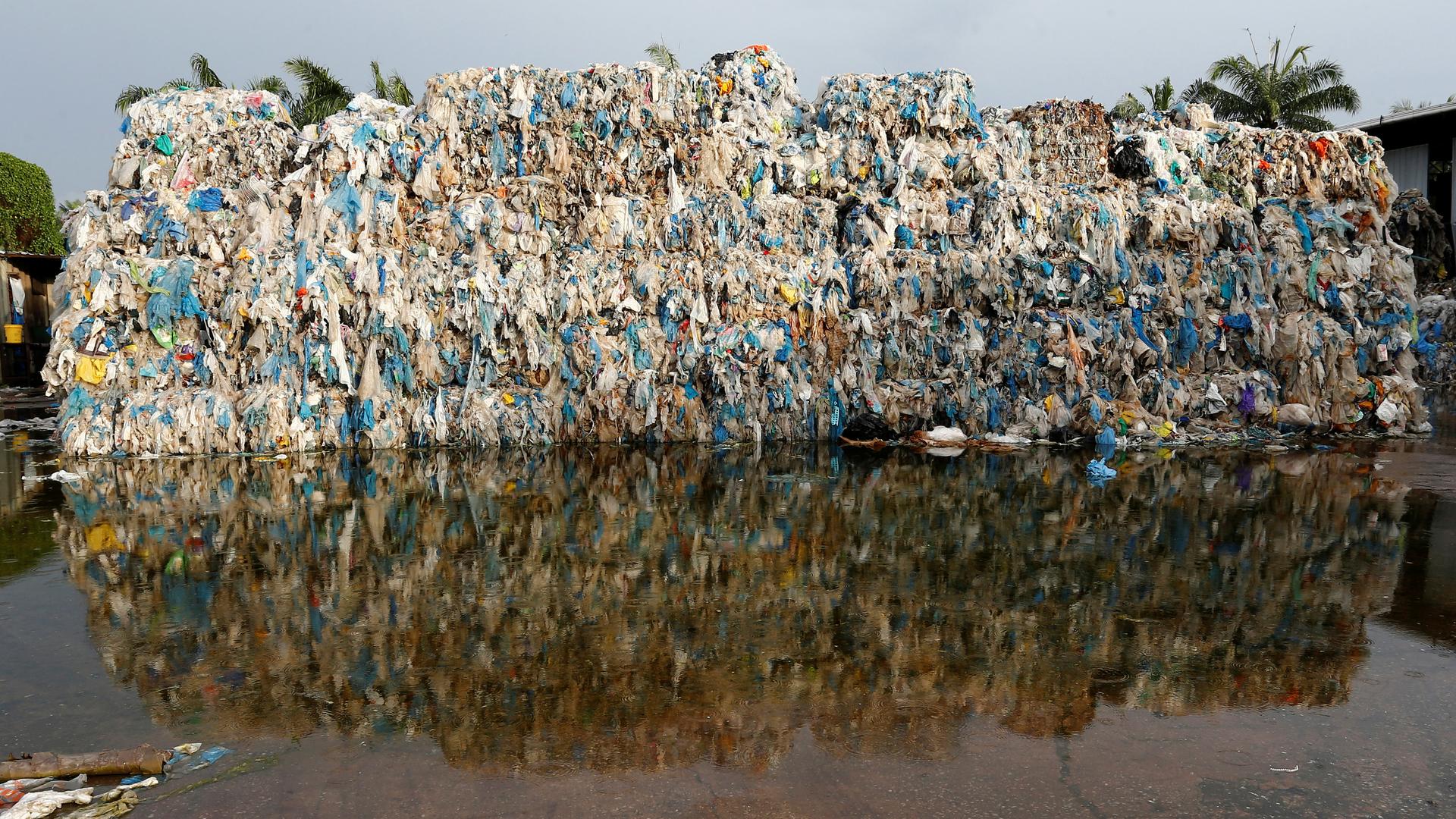America’s grungy ‘recycled’ plastic is creating wastelands in Asia
Plastic waste piled outside an illegal recycling factory in Jenjarom, Kuala Langat, Malaysia, Oct. 14, 2018.
Editor’s note: This story is part of “Pushing plastics,” a series by the Center for Public Integrity and PRI’s The World about the battle over plastic.
Follow the stench and you will find them: flaming heaps of dirty plastic, gushing black smoke, bringing death to a place otherwise teeming with life.
These are the coastal lowlands along Malaysia’s side of the Strait of Malacca. This is a mostly lush place, studded with fat palms and forest canopies dripping with vines. But over the past year and a half, black pillars of smoke have appeared above the treetops.
Tan See Han, a man in his forties who grew up in the area, spends his nights and weekends chasing the fumes. He drives around, sniffing out acrid pyres and plotting their coordinates on his phone. Each site is reported to the provincial authorities in the hopes that someone important will do something.
Related: As China gets tough on recycling, will America get cleaner?
Tan drives me to one of his latest finds: a burn pile hidden down a series of twisting back roads. We smell it before we see it, even with his truck’s windows rolled up. Rounding the corner, it comes into view: a small mound of still-smoldering plastic that is scorched black.
It’s only 8 a.m. but we’re already late, Tan says. The burning usually begins around midnight. Had we arrived in the pre-dawn darkness, he says, you might’ve seen a fire pit as big as a house. All of it fueled by plastic scrap, which is derived from crude oil and thus quick to burn.
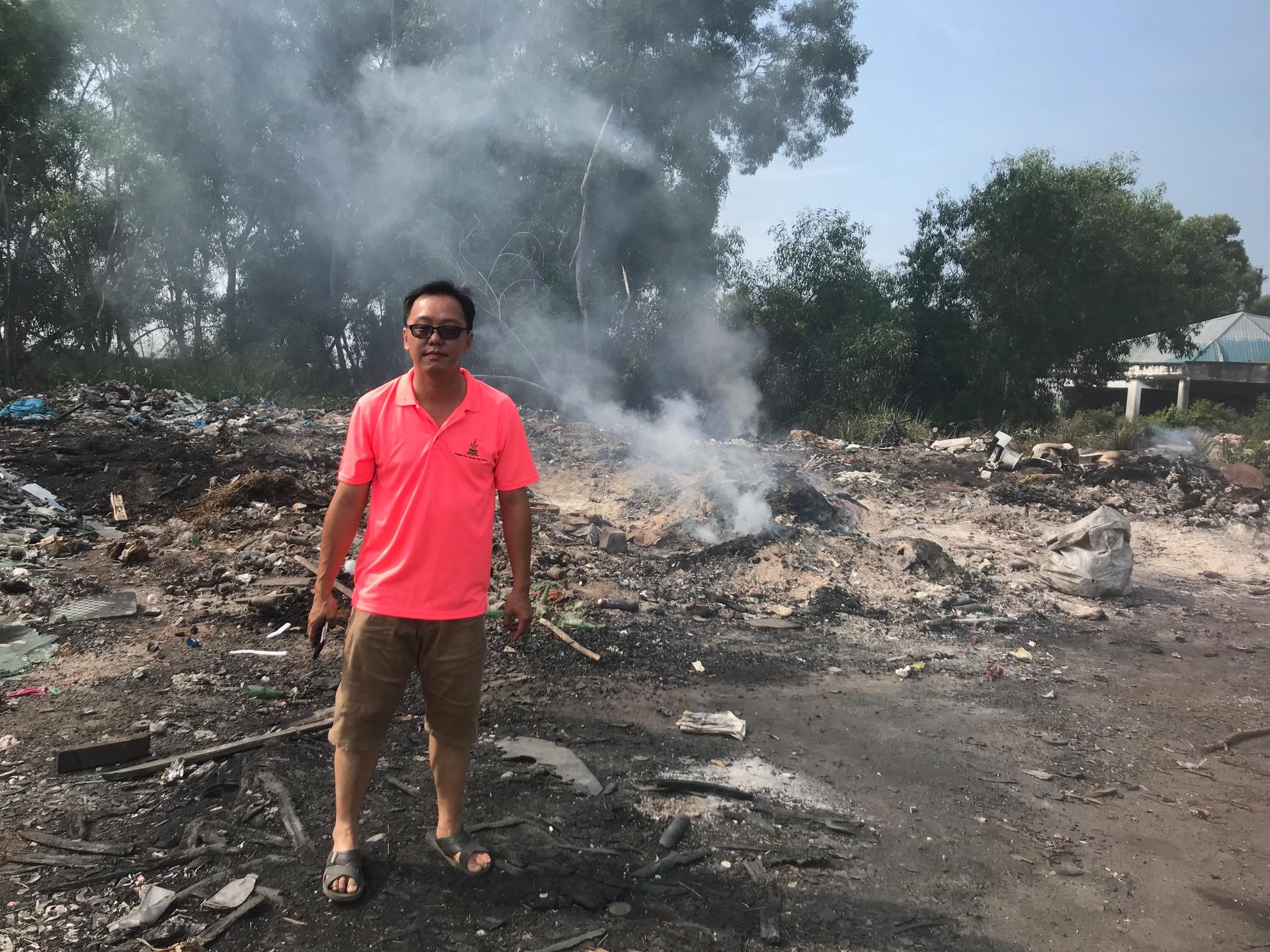
“Most of this plastic — well, the main country — it’s the USA. … You’ll see it on the labels. Made in USA! And it’s mostly plastic packaging for food.”
Stepping gingerly through the smoky heap leaves hot goop on our shoes. The fumes turn our eyes pink. “Most of this plastic — well, the main country — it’s the USA,” Tan says. “You’ll see it on the labels. Made in USA! And it’s mostly plastic packaging for food.”
Around the site, there are bulbous sacks of plastic junk, some of them spilling out of metal shipping containers. This scrap is what fuels the burn pile. There’s waste from the United Kingdom, Australia, Sweden and the Netherlands but — as Tan says — much of it comes from the United States.
There are the remnants of Five Hour Energy drinks. Shaved Parmesan Cheese, sold by the Midwestern grocery chain SuperValu. V8 tomato juice sold by Family Dollar. Electrolyte solution from Target. And so many water bottles: Aquafina, Perrier, Trader Joe’s Sparkling Natural Spring Water.
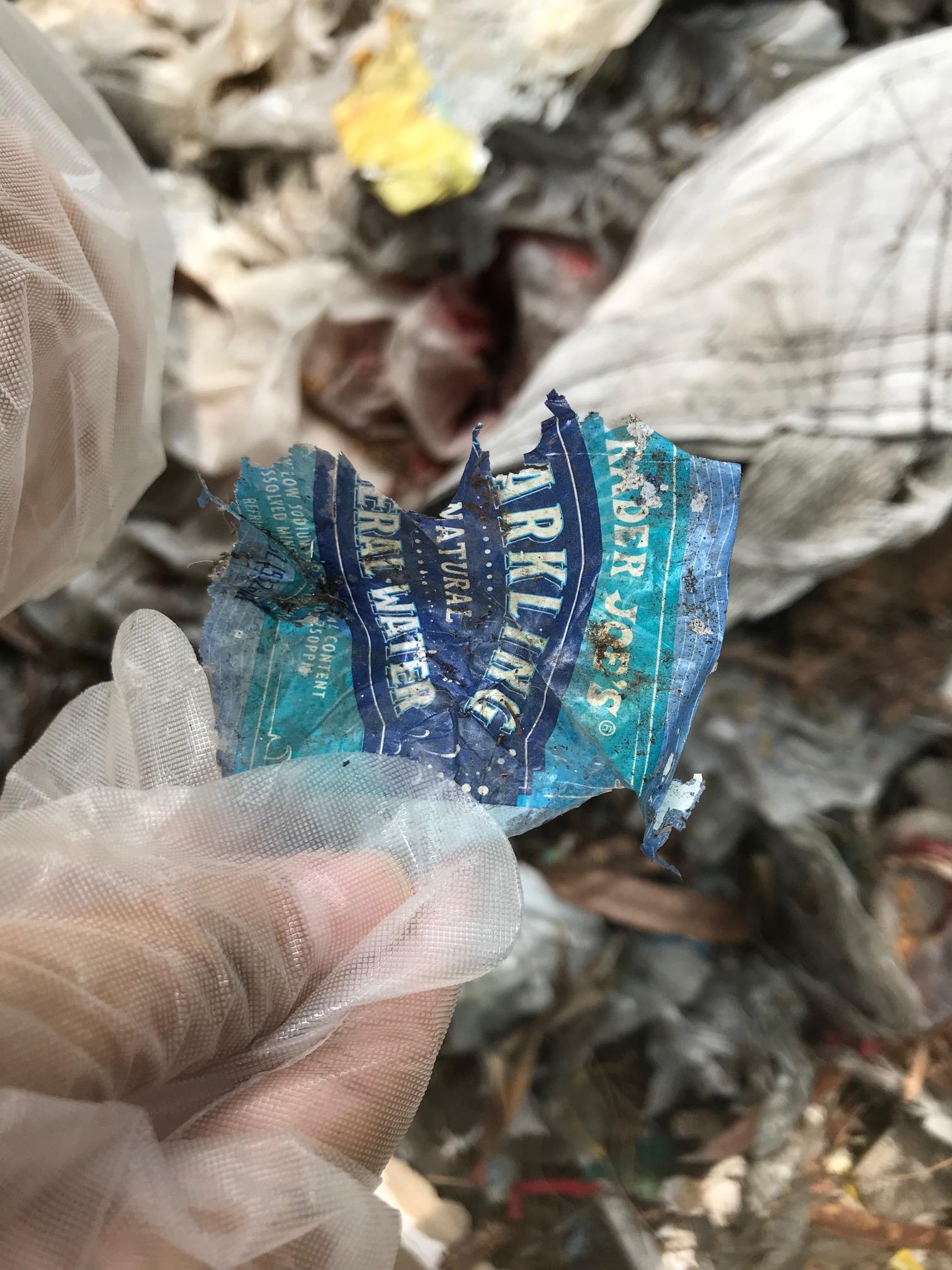
This is the detritus of American consumerism — and it is inflaming a full-on environmental emergency more than 8,000 miles from US soil. And as I speak to other Malaysian activists, I hear a refrain: America, above all, has the power to make this stop.
“American people, when you enjoy your lifestyle, which is so convenient, do you ever think about what you’re dumping into other countries?” Pua Lay Peng says. She’s a 47-year-old chemist who, like Tan, devotes her free time to documenting plastic fires erupting around the countryside.
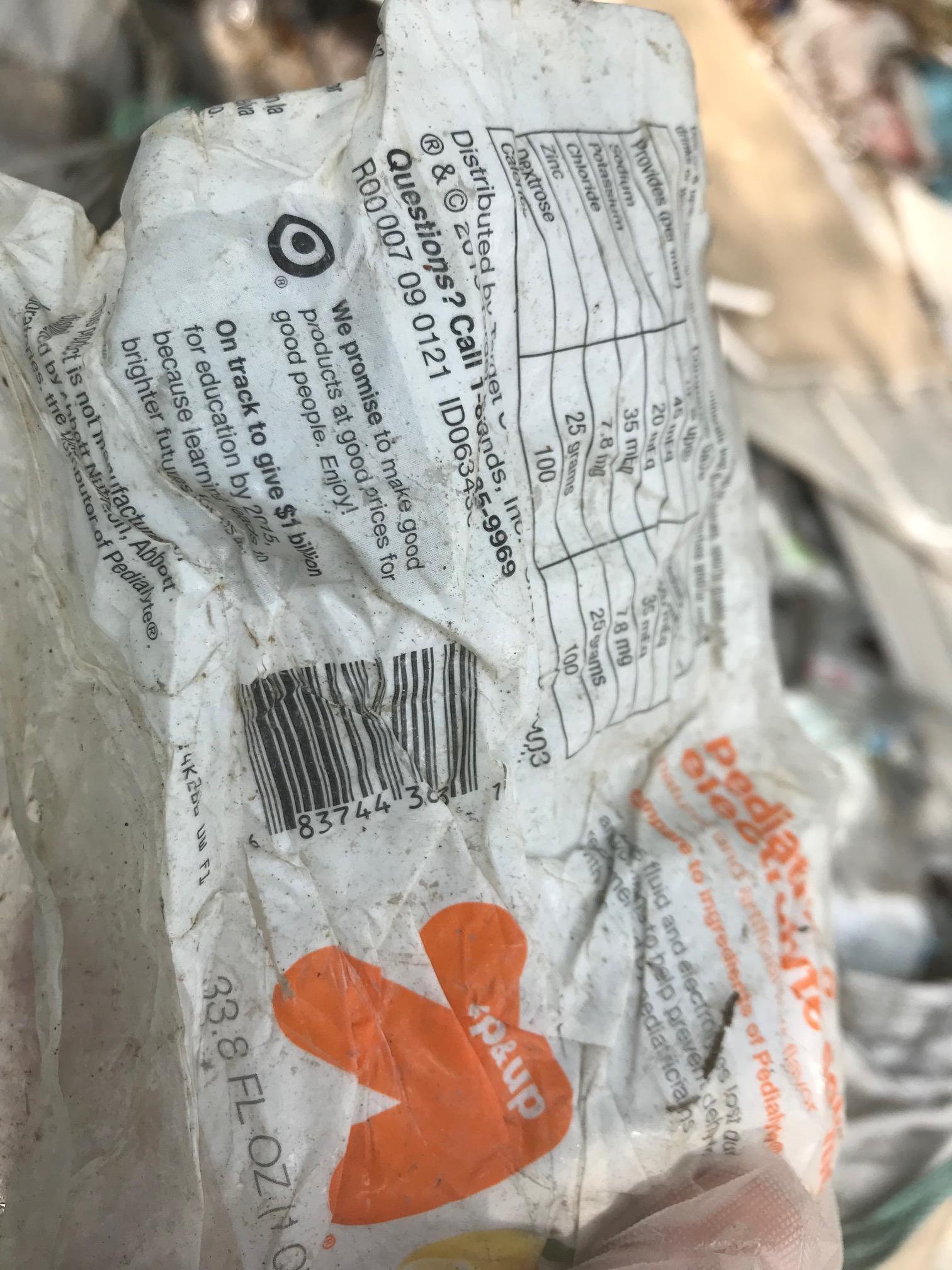
“Is this the way you act as so-called highly civilized people? You want to keep your own country clean,” Pua says. “You have protests to fight for your environment. But you dump your waste, your shit and your toxic and dangerous things into my country?”
Pua is becoming the face of the Malaysian resistance to foreign plastic. Everyday people, she says, are pitted against a complex array of enemies — namely criminal operators, coming over from mainland China, who illegally profit from American and European scrap.
“Somehow, overnight, we became the dustbin of the world. What has happened to my country?”
She belongs to a tiny collective of amateur detectives, each of them fending off what she describes as a foreign invasion that has poisoned her homeland. “We go outside … and we feel tired within five minutes. Our sky is hazy. We can’t exercise without feeling sick,” Pua says. “Somehow, overnight, we became the dustbin of the world. What has happened to my country?”
Related: Your ‘recycled’ laptop may end up in an illegal Asian scrapyard
Since the early 1990s, roughly half of the world’s plastic scrap has been shipped to China.
After used plastic forks or empty yogurt tubs fill up a recycling bin in, say, California, someone has to sift through all that waste to pick out stuff that’s too gunked up to recycle. Moreover, some types of plastic packaging can’t be recycled at all. Sorting through all this waste is a foul, tedious job and, for decades, it has mostly fallen upon Chinese workers.
This sorting process creates two piles: one for plastic that is clean enough to reuse and another for plastic that’s irredeemably dirty. In the past decade or so, it’s been an open secret that brokers in China have often disposed of that second pile using the cheapest and most destructive methods, namely burning it.
“Only some of what has gone overseas is actually recycled. … [much of the plastic shipped off to China] was being dumped, burned, ending up in waterways and piled into open fields.”
“Only some of what has gone overseas is actually recycled,” says Martin Bourque, executive director of the Ecology Center in Berkeley, California. The center, contracted by the city to pick up recyclable waste for residents, is one of the longest-running recycling operations in the US.
American recyclers have long known, he says, that much of the plastic shipped off to China “was being dumped, burned, ending up in waterways and piled into open fields.”
This doesn’t just make environmentalists such as Bourque squeamish. It’s been the subject of a years-long crackdown in China, where the government is declaring that it will no longer take the world’s foulest plastic trash.
That crackdown intensified in early 2018. And that’s about the time that strangers began turning up in Pua’s hometown.
Related: China is clamping down on dirty recycling from across the globe
It’s a quiet place called Jenjarom, home to roughly 30,000 residents, with loads of cheap, verdant land available to rent. A roughly 30-minute drive brings you to Port Klang, a gateway to Asia, and one of the busiest ports on the planet.
These qualities have attracted shady “recyclers” on the run from China’s crackdown. They’re brokers who seek a place to quickly set up illegal factories — a place to bring in foreign plastic, pick out the good stuff and torch the rest.
Jenjarom’s ethnic makeup makes it doubly attractive to Chinese operators. It was one of many Chinese-majority towns created under British rule, an era when imperial forces in the 1950s set up internment villages for Chinese workers. Families were corralled into zones where they could be monitored, lest they fall under communism’s spell.
Pua’s parents were among the corralled. Today, Jenjarom remains a place where Chinese is widely spoken — namely in the Hokkien dialect, although Mandarin is also commonly understood.
“This is a nice Chinese village. We must have seemed perfect for them,” Pua says. “We’ve got the same language, sort of the same culture. Chinese food. Chinese people, happy to rent land. And a highway running straight to the port.”
At first, the foreign men popping up in town were a curiosity. But once their scrapyards were set up, Pua says, a toxic stench settled over her hometown, bringing with it sickness and hacking coughs and kids unable to focus in class.
Pua likens the smell to leaving a hot iron on a nylon shirt, toasting its fabric until the fumes singe your sinuses. That times one million. Just taking a walk to the neighbor’s house would leave a sickly film in her throat. Exercising outdoors? Forget it, she says.
It was like the light dimmed in everyone’s eyes.
“What a big shame for Malaysia! We have a beautiful country, a green environment,” she says. “Then it’s like, wow, do you even dare to breathe outside? People would just hide in their rooms.”
Related: Here are all your burning questions about recycling, answered
The bolder residents vowed to take action. They chased the smoke, discovered the burn sites — dozens of them — and snapped photos, sometimes using drones. As a chemist, Pua knew that they were inhaling dioxins, a potentially cancerous class of compounds.
The activists steadily built their ranks, seeking out others in nearby ethnic Chinese enclaves that were also plagued by plastic fires. They brought their evidence to the authorities, handing over binders of paper filled up with GPS coordinates and damning pictures.
Sometimes this would result in an illegal factory’s closure. But far too often, Pua says, the factories would resurface nearby like a stubborn infection. She strongly suspects corruption is to blame.
“Can you believe it? They’d get raided, two or three times, and dare to come back,” she says. “This government has no function!”
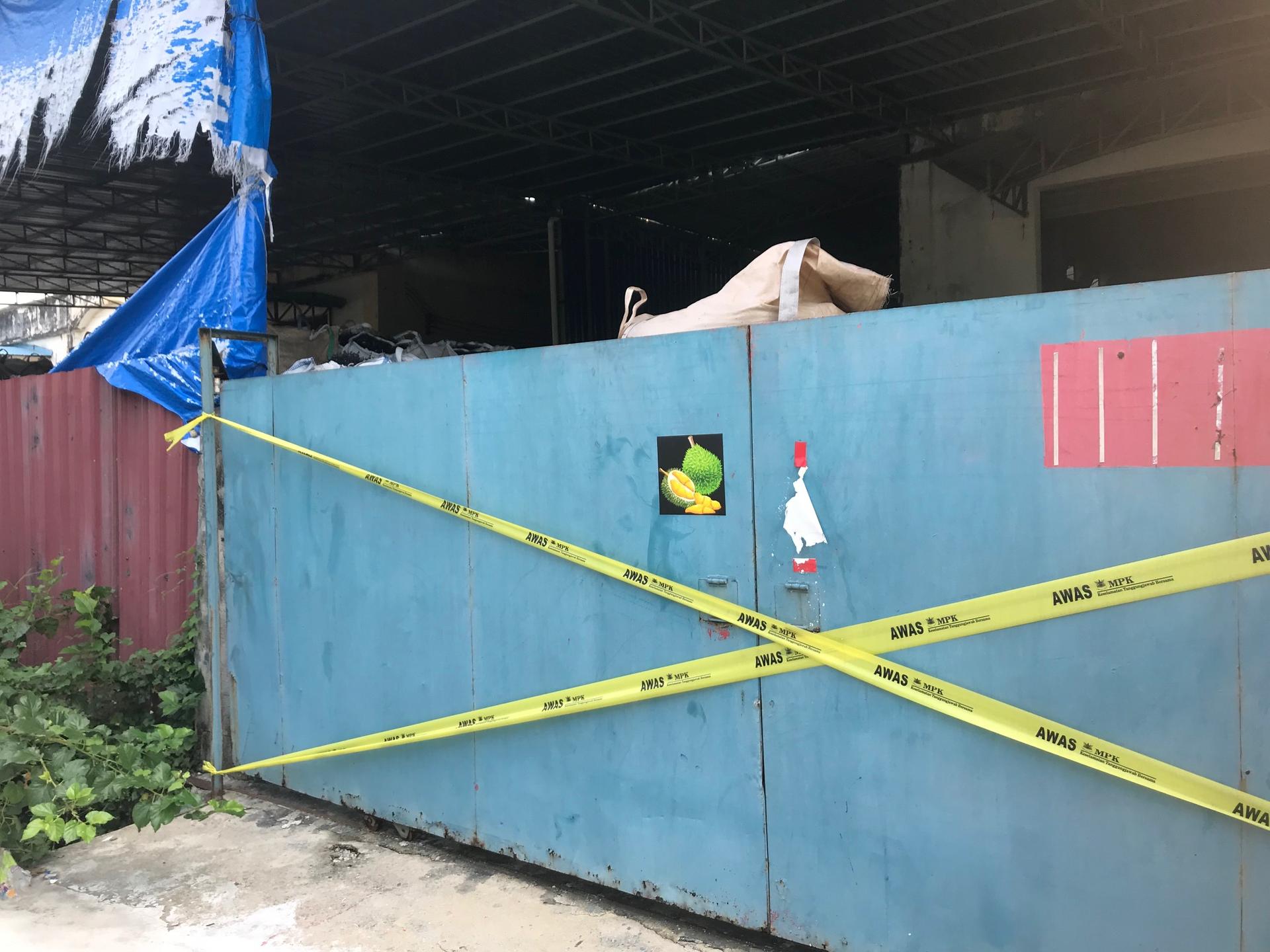
Then came the threats. Once, while documenting an illicit scrapyard, Tan was encircled by men who yanked the keys out of his truck, screamed at him and warned him to never return. Pua and her peers have also received messages warning them that there is a price on their heads: 100,000 ringgit, the Malaysian currency, or roughly $24,000.
Her reply? “Haha,” she wrote back in English. “Waiting here we also will die.”
In other words: If you’re going to saturate my town in cancerous smoke —threatening the lives of myself, my kids and everyone I love — then I’m already facing death. What do I have to lose by confronting you?
“If we keep quiet, you know what will happen?” she says. “Those illegal factories, they would multiply by two times, three times. They can copy and paste so fast!”
The tribulations facing this one town are just a microcosm of the larger plague faced by the entire country of Malaysia. Last year, this tropical nation — a bit smaller in size and population than California — took over from China as the top recipient of US plastic scrap.
Jenjarom has become ground zero for the resistance. At last, activists such as Pua appear to have captured the government’s attention. Malaysia’s environmental minister, Yeo Bee Yin, has promised the start of a China-style crackdown.
Declaring to local media that “Malaysia will not be the dumping ground of the world,” the minister has declared war on global “syndicates who are making lucrative profits from importing such waste from developed countries.” She has a word for Malaysians who are getting rich off this racket: “traitors.”
“…The problem is not only a Malaysian problem. The international waste trade system itself is broken and based on false assumption about what really happens with waste.”
Yeo has promised to eventually phase out all plastic scrap imports and root out the criminal burn sites. Greenpeace has called this a “strong step in the right direction,” though its lead Malaysian campaigner, Heng Kiah Chun, warns that “the problem is not only a Malaysian problem. The international waste trade system itself is broken and based on false assumption about what really happens with waste.”
What these campaigners want is a world where — at the bare minimum — countries such as the US will keep their plastic trash at home.
But that will come with costs. For example, when Berkeley’s Ecology Center learned that some of its plastic waste was turning up in dubious sites in rural China and Malaysia, the city decided to stop exporting plastic waste altogether.
They now have their plastic waste sorted at a California facility, which uses high-tech machines with optical scanners to help sift out reusable scrap.
That decision was not cheap. Before Beijing’s crackdown ramped up, brokers in China were paying the Berkeley center roughly $35 per ton of plastic scrap, Bourque says. Now the city the center has to shell out $75 per ton — and only about half of that junk ends up getting recycled. The rest is dumped into a garbage dump.
“But we’d rather see it thrown into a landfill where at least we know where it’s going,” Bourque says. “That’s better than exporting it into uncertain markets overseas.”
This was a costly decision was made in an affluent college town with a strong environmentalist streak. Not every US city will be willing to boost its costs to spare some faraway Asian village from catastrophe.
Meanwhile, Malaysian activists have secured small victories — such as pushing the illegal pyres out of Jenjarom — but the burn sites keep resurfacing elsewhere along the coast, in places such as Pulau Indah (Malay for “beautiful island”), where Tan took me, and as far north as a region bordering Thailand.
“They’ll just keep finding another place to burn,” Tan says. “Maybe deeper in the jungle.”
Pua soldiers on, filing multiple reports on illegal dumps each week, growing more exhausted by the day. She confesses that the stress is causing her to drop weight. Her Saturdays and Sundays are devoured by the tedious work of scouting and pestering authorities.
Frankly, Pua tells me, she hates talking about this plastic scourge, especially to a foreigner. “This is nothing I would ever feel proud to tell you. This is my country. This is my hometown. I don’t want to criticize it.”
“…I have to take the opportunity to say this: America, the way you dump your waste on us … it is very hypocritical. … Stop sending your rubbish to other countries and start managing it yourself.”
“But I have to take the opportunity to say this: America, the way you dump your waste on us … it is very hypocritical,” Pua says. “Stop sending your rubbish to other countries and start managing it yourself.”
Jamie Smith Hopkins from the Center for Public Integrity contributed reporting from California.
